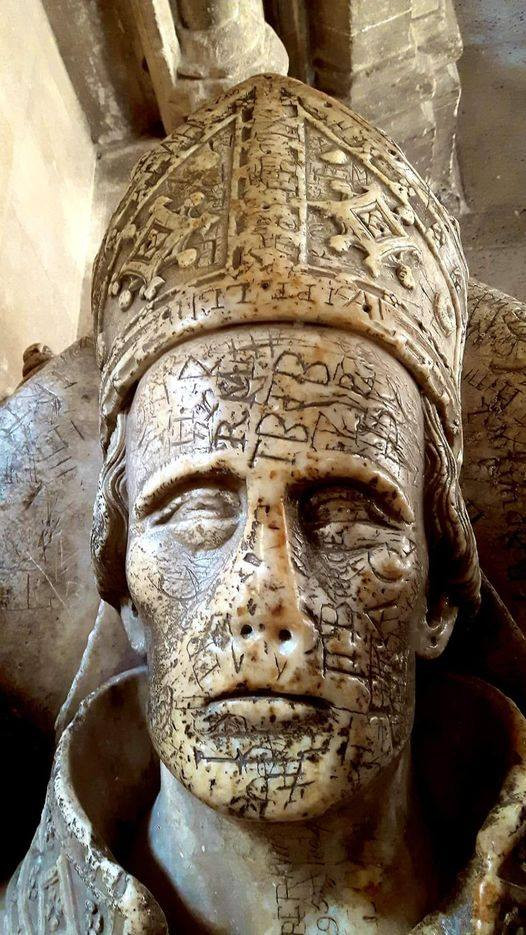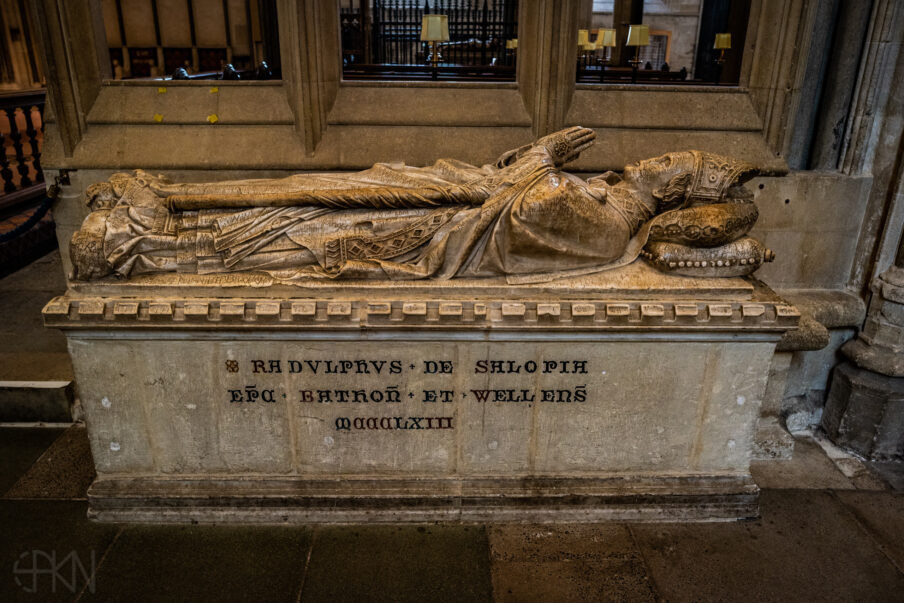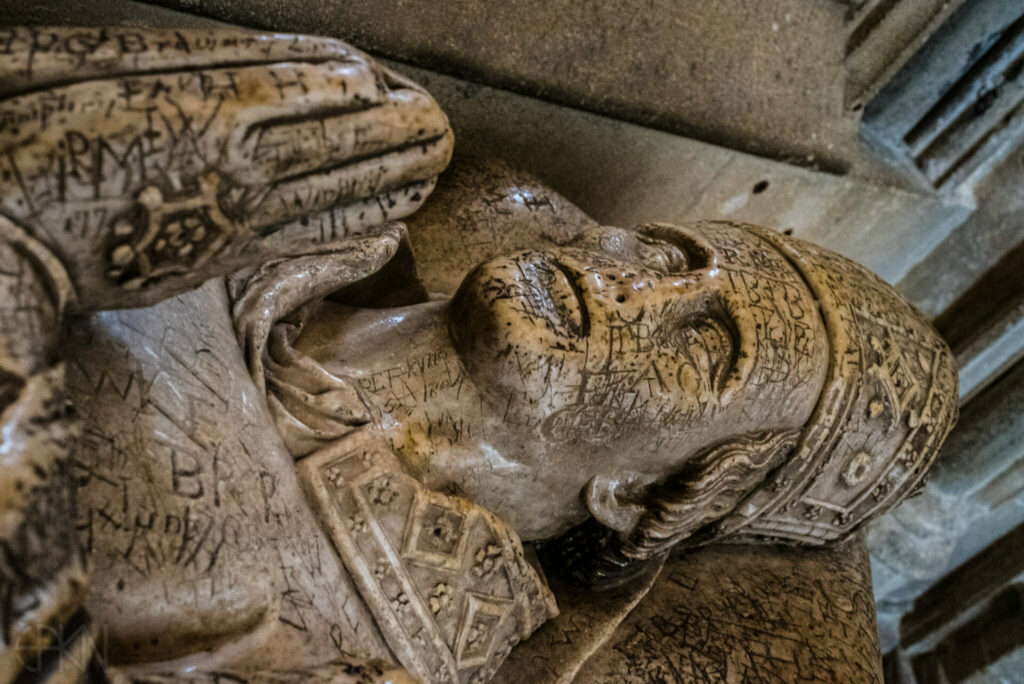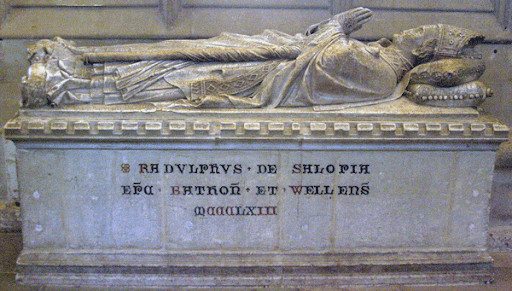A Testament in Alabaster
Nestled within the North Choir Aisle of Wells Cathedral, Somerset, stands a striking relic of medieval history—the alabaster effigy of Bishop Ralph of Shrewsbury. As one of the earliest surviving alabaster effigies of a high-ranking clergyman, this sculpture is more than just a work of art; it is a silent guardian of the legacy of a man who profoundly shaped both the physical and spiritual landscapes of 14th-century England.

From Scholar to Shepherd
Born into relative obscurity, Ralph of Shrewsbury’s brilliance and devotion propelled him to prominence. Before ascending to the bishopric, he served as Chancellor of Oxford University from 1328 to 1329, a position that underscored his scholarly acumen. His unanimous election as Bishop of Bath and Wells in 1329 marked the beginning of an era defined by both spiritual leadership and architectural transformation.

Fortifying Faith and Stone
Bishop Ralph’s tenure was distinguished not only by pastoral care but also by his strategic fortifications. Recognizing the necessity of safeguarding Wells Cathedral and its surrounding properties during a turbulent period, he oversaw the fortification of the Bishop’s Palace, reinforcing it with towering walls and a deep moat, remnants of which still stand today. His influence likely extended to the eastern limb of Wells Cathedral, reshaping the very heart of his sacred domain.

A Guardian of the Clergy
Perhaps Bishop Ralph’s most profound and enduring contribution was his dedication to the welfare of the minor clergy. Understanding the need for stability and structure, he founded the College of Vicars Choral, establishing a self-sufficient residential community known as Vicars’ Close. This architectural marvel—the oldest continuously inhabited residential street in Europe—remains a testament to his foresight in securing both the well-being and autonomy of the cathedral’s clergy.

A Masterpiece of Medieval Artistry
The alabaster effigy of Bishop Ralph is an exquisite example of 14th-century craftsmanship. He is depicted in eternal repose, hands clasped in prayer, his intricately detailed mitre resting gently upon an ornate cushion. Once positioned before the high altar, the effigy was later relocated around 1550, enduring centuries of both reverence and neglect. Today, its contrasting sides—one heavily marked by graffiti, the other remarkably preserved—tell a compelling story of time’s passage.

A Legacy Cast in Stone
Within Wells Cathedral, a commemorative panel painting from the late 16th or early 17th century portrays the vicars kneeling at Bishop Ralph’s feet, a touching homage to the man who shaped their lives. His influence extends far beyond the cathedral’s walls, living on in the very fabric of Wells’ religious, educational, and architectural heritage.
As visitors stand before Bishop Ralph’s effigy today, they are not merely witnessing a beautifully sculpted monument—they are encountering a legacy of faith, wisdom, and vision, etched into the enduring stones of Wells Cathedral.

